|
1962:
|
|
German
immigrants Walter Stengel and Marcos Hinztler found in Talcahuano
Pesquera El Golfo y Cía. Ltda., a company for hake trawling that
markets the fresh catch mainly in Santiago.
|
| |
|
|
| |
|
|
| |
|
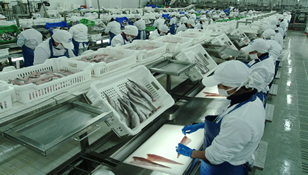 |
| |
|
|
|
1976: |
____ |
El
Golfo buys the shrimp boats Quillay, Maitén, Felita and Angelica. It is
the beginning of the company’s prawn and shrimp catching operations. El
Golfo’s first freezing plant is built.
|
| |
|
|
| |
|
|
| |
|
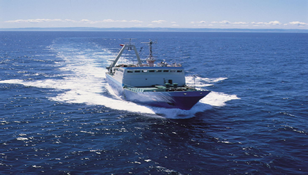 |
| |
|
|
|
1980: |
|
A
fishing ban for prawn is imposed by Chilean authorities. El Golfo
diversifies with fishmeal and fish oil production, centered at small
plant located at the southern port of San Vicente.
|
| |
|
|
| |
|
|
| 1986: |
___ |
The
company is bought by its present directors: Manuel and Jaime Santa
Cruz, Hugo Yaconi, Mario Vinagre and Ernesto Noguera. The new Pesquera
El Golfo S.A., with a staff of around 200, gets new technologies and a
more professional management. It is the beginning of an era of
modernization and expansion to foreign markets.
|
| |
|
|
| |
|
|
| |
|
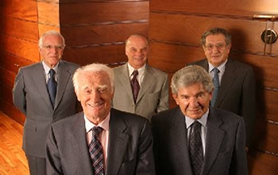 |
| |
|
|
| 1991: |
|
El
Golfo gains strength in the fishmeal and frozen fish markets, both in
Chile and abroad. The main goal at this stage is to put in the market
products with a greater value added. The company starts production of
surimi from jack mackerel and soon becomes one of the main surimi
producers in the world.
|
| |
|
|
| |
|
|
| 1995: |
|
El
Golfo is awarded the Best Exporter 1995 prize by Sociedad de Fomento
Fabril (SOFOFA), Chile’s oldest and most prestigious trade association.
The previous year it had been awarded the Best Company of the Year
prize by the Concepción Chamber of Commerce and Industry.
|
| |
|
|
| |
|
|
| |
|
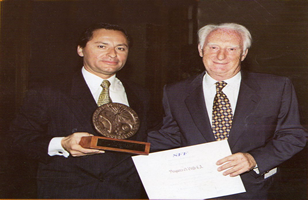 |
| |
_ |
|
| 1998: |
|
The
Coating and Breading plant is built and El Golfo Comercial begins its
operations as the retail branch of the company. Hake and kingclip
fillets as well as a new line of breaded fish products make the El
Golfo brand widely known in the domestic Chilean market.
|
| |
|
|
| |
|
|
| |
|
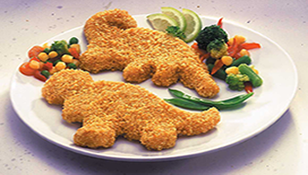 |
|
|
| 2000: |
|
A second fishmeal plant is built in Corral (X Region).
|
| 2003: |
|
El
Golfo’s corporate headquarters building is inaugurated in Talcahuano.
Its new frozen seafood and surimi plants, also located in Talcahuano,
rank among the most modern in the international seafood industry. The
company employs over 1500 workers. We take up the challenge of scallop
farming to stay ahead in matters of market dynamics and consumer
tastes. Our first scallop farm is set up in Antofagasta.
|
| |
|
|
| |
|
|
| |
|
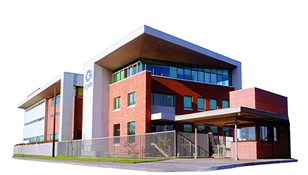 |
| |
|
|
| |
|
|
| |
|
|
| 2004: |
___ |
Opening
of the Madrid branch office. El Golfo Europe is a new division of the
company, created to be closer to our international markets and acquire
a better knowledge of our customers’ needs.
|
| |
|
|
| |
|
|
| 2005: |
|
El
Golfo’s mussel farms are set up at Quinchao, on Chiloé isle (Southern
Chile). The production is processed in a new plant at Chonchi, on the
southeastern shore of the island. |
| |
|
|
| |
|
|
| |
|
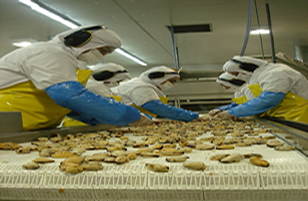 |
| |
|
|
| |
|
|
| |
|
|
| 2005: |
|
Renowned
by the quality of its products all over Chile, El Golfo goes
international: El Golfo Argentina soon becomes one of the top players
in the local retail market; Argentina is now the company’s springboard
to Latin America. |
| |
|
|
| |
|
|
| 2006: |
|
The
biggest challenge taken up by El Golfo so far: salmon farming. Our
salmon farms located in the Guatecas Archipelago (XI Region, southern
Chile) start production in 2007 and the updated Talcahuano processing
plant delivers salmon products to the world markets. A new good quality
job opportunity is opened for our workers. |
| |
|
|
| |
|
|
| |
|
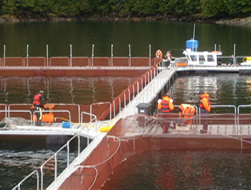 |
| |
|
|
| |
|
|
| |
|
|
| 2007: |
|
Two
decades of hard work and innovation have borne fruit: El Golfo is a
household brand for the most demanding consumers in over 40 countries.
On land and at sea, the people of El Golfo turn the riches of the
Chilean ocean into products of the finest quality. It is thanks to the
commitment and efforts of our staff of over 1600 men and women that we
are traveling under full sail to the future. |
| |
|
|
| |
|
|
| |
|
|
| |
|
 |
| |
|
|
 |
 |
|